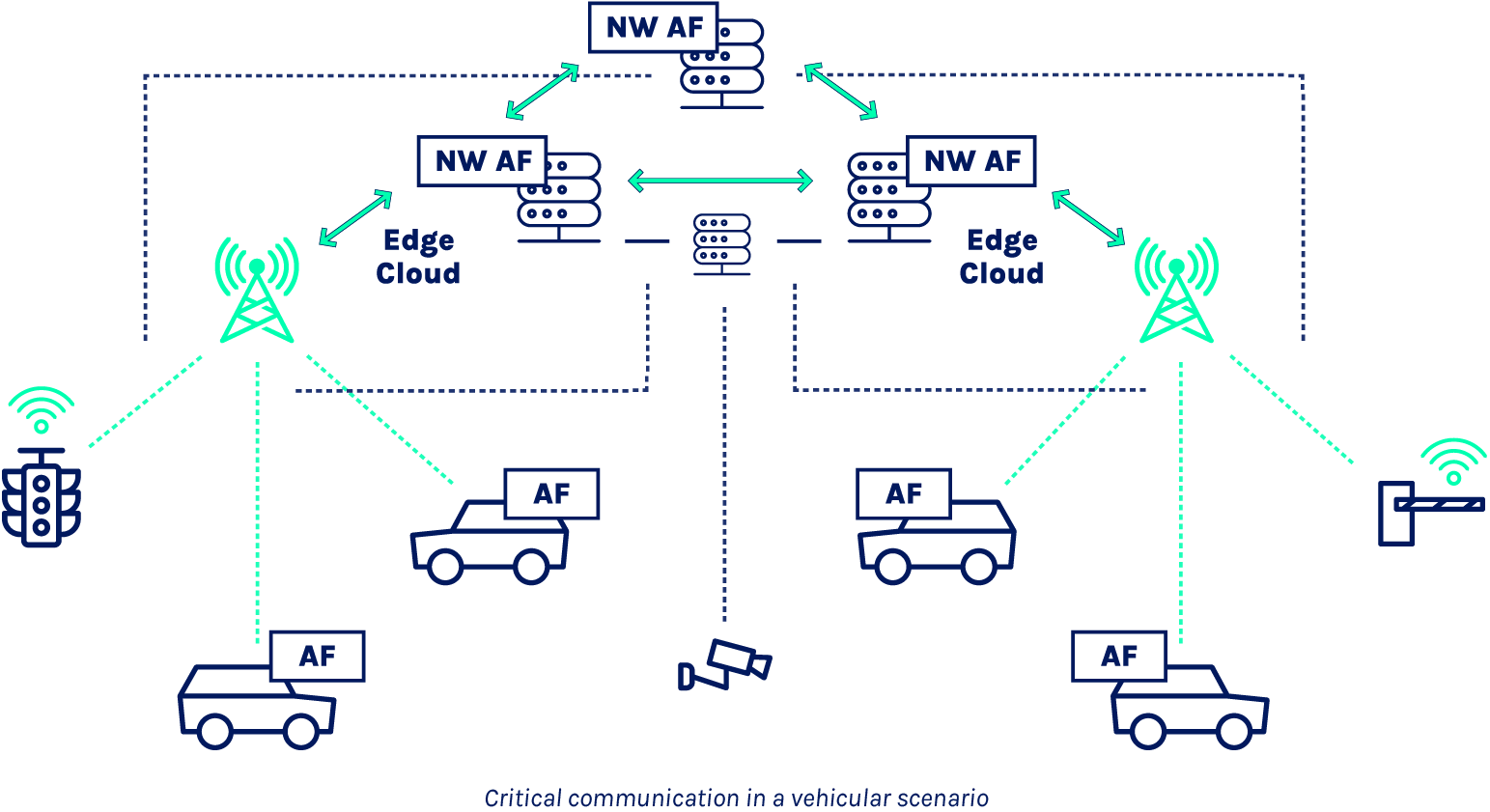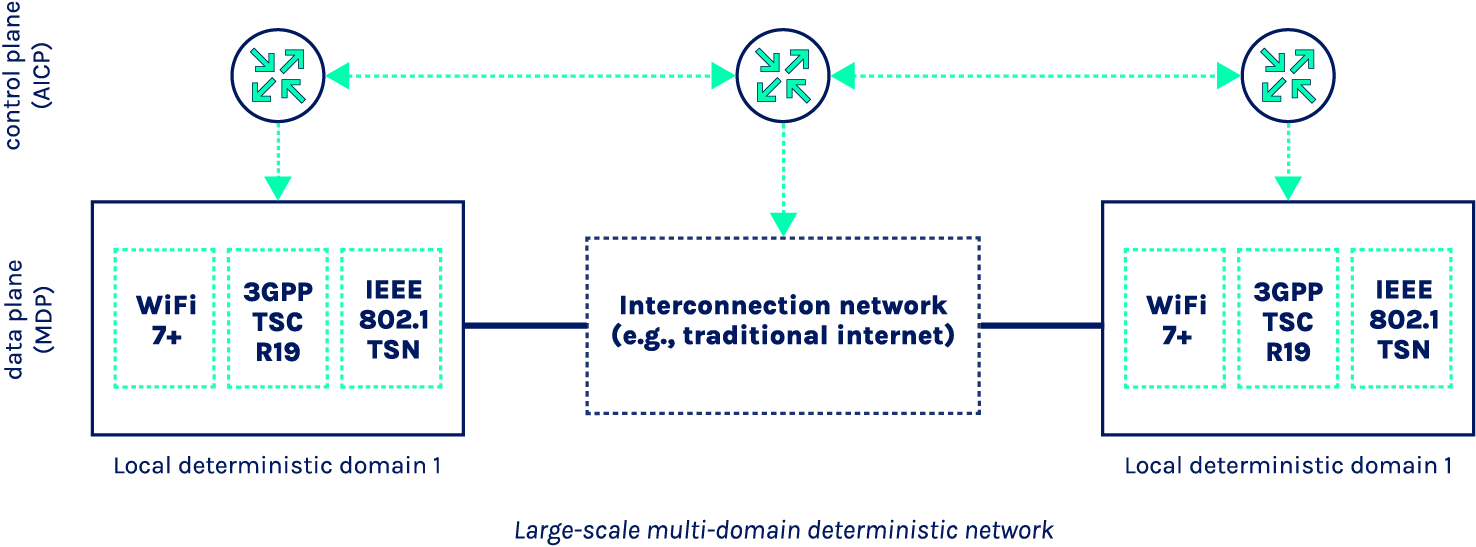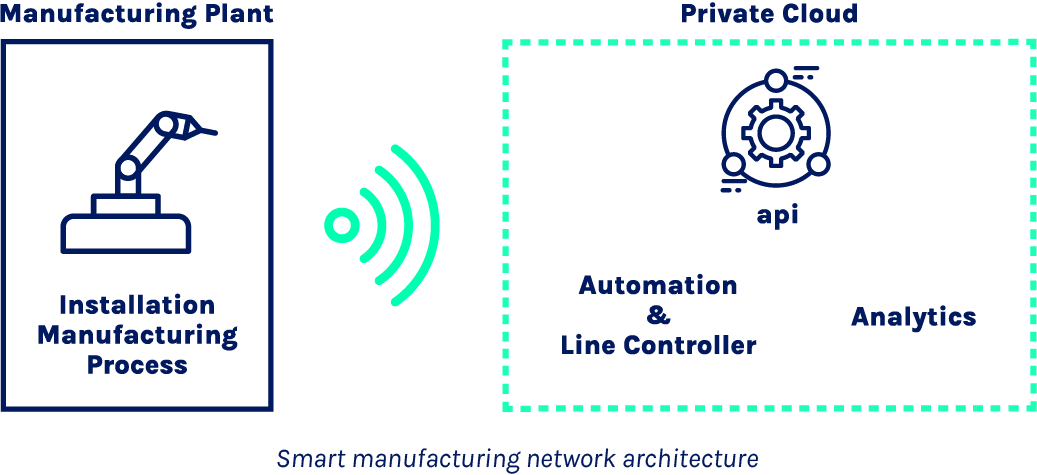The PREDICT-6Guse cases.
The different features developed within the project, specifically the MDP and AICP, will be validated in three use cases, carefully selected to represent application needs and relevant technological gaps. The three use cases will be developed, tested and validated in two European top-level Open Labs: Nokia Budapest Open Lab and Madrid Open Lab 5TONIC.
Use Cases
Deterministic services for critical communications
Multi-domain deterministic communication
Smart Manufacturing
Deterministic services for critical communications
at the Nokia Budapest Open Lab
This use case provides a challenging multi-modal mobility scenario coupled with deterministic needs that serves as a good test for the multi-domain autonomous deterministic network architecture proposed by PREDICT-6G.
Devices requiring deterministic group communication over a distance is a pattern followed by scenarios such as cooperative cloud robotics, cyber-physical system automation or long-range vehicular communication. In these scenarios, devices may run local Application Functions (AF) connected to cloud applications. Mobile devices may also engage in collaborative tasks, which require that the network provides deterministic communication for a group of equipment where groups may dynamically evolve as devices are joining and leaving according to their interest or mobility.
In all these cases, it is important that the devices and the cloud applications participating in the same collaborative relation stay synchronized with regards to their shared application state and thus need to exchange information, data, commands, and contextual information through deterministic and reliable communication services.
One example of deterministic group communication is composed of vehicular applications, on-board cameras or ones installed at fixed road-side locations, traffic sensors or traffic control infrastructure, where devices generate and send data in predictable -potentially cyclical- patterns.

The communication is dynamic with regards to the groups of vehicles that momentarily exchange messages with each other. As only vehicles within physical proximity or participating in a cooperative maneuver need to receive each other’s messages, the group communication relations are changing frequently based on the trajectory of each vehicle in an ad-hoc manner.
This means that the MDP (Multi-Domain Platform) providing reliable, low latency and low jitter for a group of vehicles must support adding/removing vehicular endpoints dynamically and it must follow the physical mobility of the vehicles by continuously reconfiguring the deterministic service layer of each network domain and network element involved in fulfilling the service.
Multi-domain deterministic communication
at the Madrid Open Lab (5TONIC)
PREDICT-6G will demonstrate through this use case the extension of deterministic communications to large-scale scenarios in a multi-provider scenario by exploring a combination of control and data-plane mechanisms to ensure in-time and on-time services.
A great majority of scenarios for deterministic communications apply to single domain cases. However, determinism can be required in situations where multiple providers and stakeholders, having a loose relation among them, intervene in the service provision and delivery as in the case of providing in-time or on-time services across, for instance, multiple sparse sites of industrial enterprises, holographic communications, or distributed mission-critical applications.
In this use case, the MDP will be implemented through the interworking of available technologies such as WiFi, 3GPP, TSN, Flexible Ethernet, DetNet and network programmability, enabling bounded E2E latency and reliability of the communication, as well as for extend the service awareness to the internal of the networks traversed. A multi-domain scenario will be built with the objective of experiment and develop techniques and guidelines assisting the extension of the deterministic approach at large scale.

Smart Manufacturing
at the Ericsson Madrid Open Lab (5TONIC)
In current industrial deployments, installations are typically wired to ensure that the signals are transmitted at the right time, but the protocols that ensure this determinism are also critical to guarantee that signals and commands follow the correct order. Therefore, to remove all the wires from an installation and have a wireless connection, the same level of determinism, reliability, and latency as when connected via wires, is required.
Our partner GESTAMP has been committed to Digitization and Industry 4.0 for several years, with a clear vision: to transform its current manufacturing model towards the model of the future smart manufacturing plant, providing wireless access with deterministic characteristics to robots controlled in the cloud, using the innovations on disaggregated architectures expected in 6G.

To achieve this objective, the current concept of automated manufacturing installations needs to evolve to one in which the different new technologies converge, enabling concepts of flexibility, agility, and mobility for a manufacturing process. Another goal of this evolution is to change the current industrial control and automation programming to a SW programming, creating the possibility to orchestrate OT and IT systems at the same level, from the cloud.
